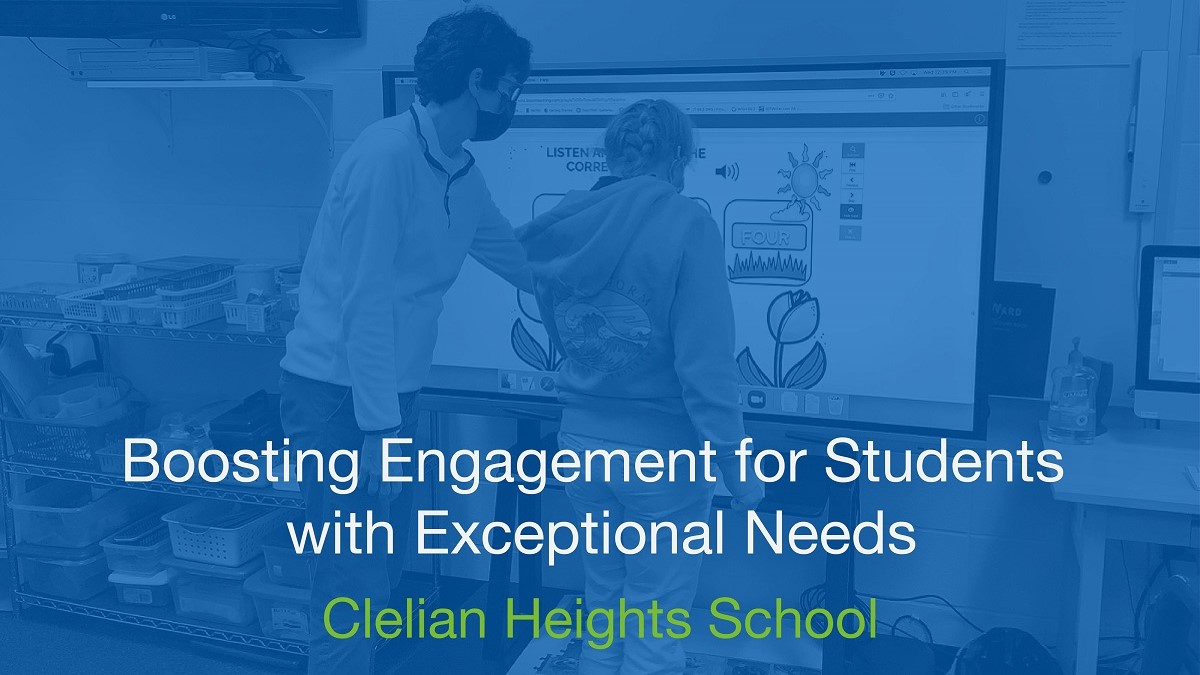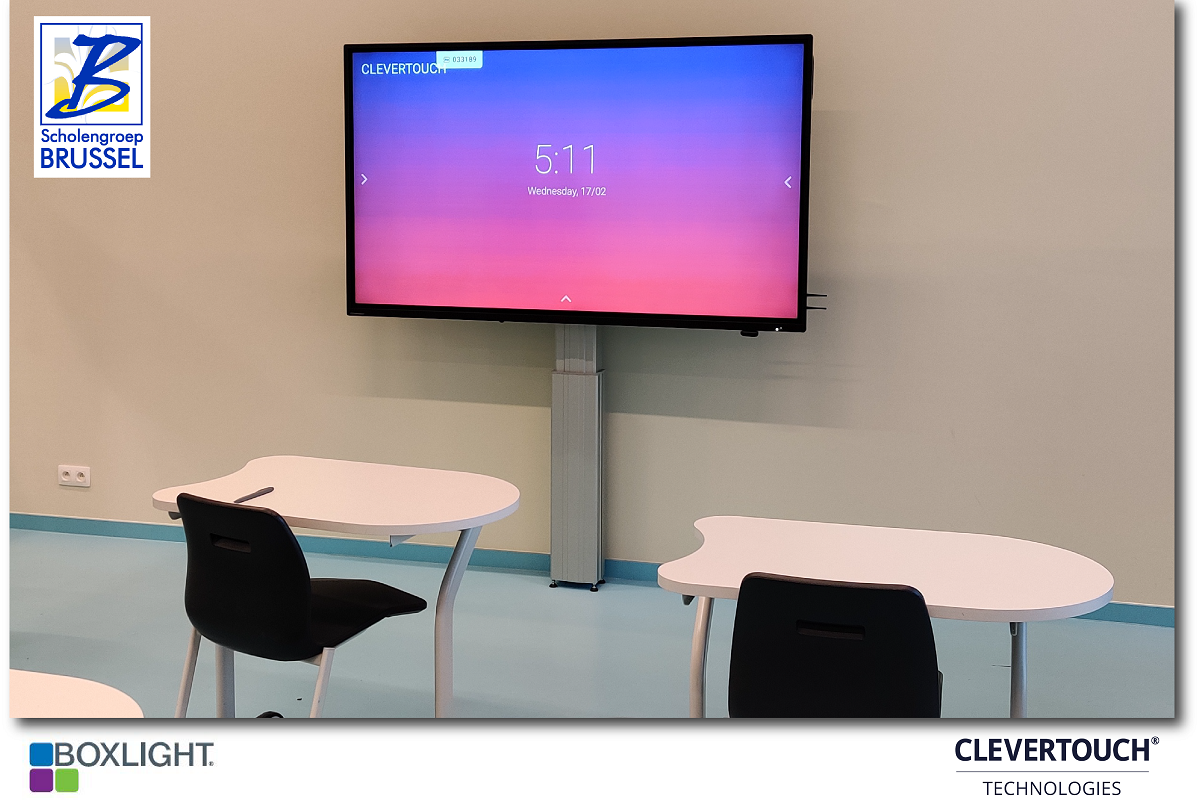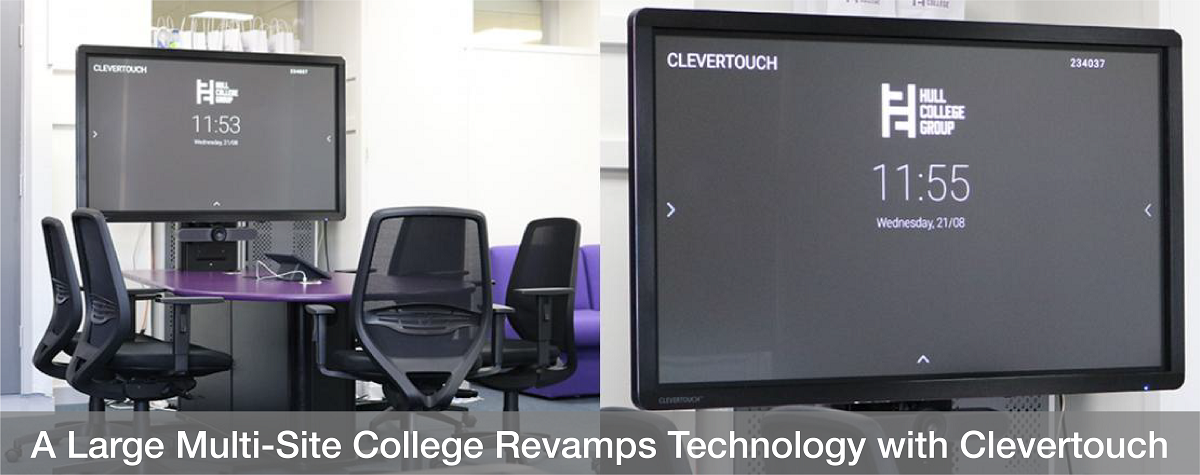Since late March 2020, the federal government has approved relief funding to help states address challenges to student learning caused by the coronavirus pandemic. The Coronavirus Aid, Relief and Economic Security (CARES) Act, the Coronavirus Response and Relief Supplemental Appropriations Act (CRRSA), and the American Rescue Plan will provide approximately $190 billion to the Elementary and Secondary Emergency Education Relief (ESSER) fund. Of course, with the availability of funds come many questions such as - How can these funds be used? When do they need to be used by? Where should we start?
Clelian Heights School for Exceptional Children (Greensburg, PA) was looking to update and innovate their learning environments. To meet the needs of their students, who range in age and ability levels – 5-years to 21-years-old, Higher Functioning to Lower Functioning – the school wanted education technology that would engage their students while being easy-to-use. They recognized that to better meet each students’ Individualized Education Plan (IEP), a variety of tools and resources were necessary including innovative technology.
Topics: Education Technology, Case Studies, ProColor
Hannah Olson, Co-Creator of the award-winning MyStemKits STEM Curriculum, recently spoke with Larry Jacobs from American Consortium for Equity in Education (ace-ed.org) on the topic of STEM education and careers, focusing on encouraging young women to explore what STEM has to offer.
Topics: STEM, STEM education, Podcast, Women in STEM, Girls in STEM
How Principals Can Support Teachers Dealing with a Tough Year
If the last year has taught us anything, it’s that teachers are incredibly resilient, resourceful, and ready to move forward. Besides working through a pandemic, whether in-class with stringent safety precautions or remotely while also dealing with personal responsibilities, teachers have proven that they are willing to make the effort. Why? There’s a lot of heart in the teaching profession. Many teachers will attest to the joy they feel from seeing their students’ eyes light up when they understand a new concept or are excited by a hands-on project. Being in a classroom, teachers are able to work closely with their students, observe how they collaborate with one another, and celebrate achievements as a group. But with what seems like the unending concerns over health and safety, learning loss and closing gaps, and the social-emotional well-being of their students, teachers need more than a “Good job!” and “Keep going!” What can school principals do so that teachers feel like they’re being seen, heard, and supported?
Topics: teacher support
Benefits of Physical Activity on Learning: Tips to Try Today!
Every April is Move More month, created by the American Heart Association to motivate people to increase their activity and improve their health. Physical activity benefits more than the body’s health; studies have shown that physical activity also improves attention, mood, and reasoning skills. For example, increased activity has shown to improve concentration and sharpen memory. How?
Topics: tips for teachers
Maximizing Class Interaction with Simple-to-Use Display Technology
The Brussels School Group (Belgium, Europe) is made up of 100 schools and offices, over 27,000 students, and over 4,500 staff. This large and diverse group was interested in replacing their interactive displays and projectors with an ed tech solution that was not only state-of-the-art, but also easier to manage and service. They also were looking for an educational technology solution that sparked both teacher and student engagement and motivation.
Topics: Case Studies, Clevertouch
With almost a year of considerable use of education technology, including web-enabled devices, large-screen interactive panel displays, video conferencing software, learning management systems, and web cameras, the need to keep students safe is greater. At the beginning of the school year, most districts made sure parents and students signed some type of Acceptable Use Agreement for online learning and digital resources to ensure a safe learning environment. What are general safety reminders and expectations teachers and parents need to make sure are followed?
Topics: Education Technology, Internet Safety
Hull College (U.K.) was determined to work through a bold 5-year development plan to revamp its technology. The college was faced with trying to find the right immersive and inclusive classroom technology for adoption across multiple sites. John Bayes, Director of ICT Services, knew that after a few demonstrations of the Clevertouch® solution, they found what was needed. Bayes commented, “We tried and tested the top manufacturers and quickly realized Clevertouch gave us the most value for our investment.”
Topics: Case Studies, Clevertouch
Tips for Teaching Students with Autism Spectrum Disorder
April 2 is World Autism Awareness Day, a day that recognizes the rights of those with autism spectrum disorder (ASD). What is ASD? It is a developmental disorder that can cause people to behave, communicate, interact, and learn in different ways than most others. According to the Centers for Disease Control and Prevention (cdc.gov), in 2016 there were 1 in 54 eight-year-old children identified with autism spectrum disorder (ASD) across the United States.* What does this mean for classrooms across the country? Teachers need to be prepared to teach students with ASD, using a variety of strategies and tools including educational technology. Read some tips for supporting your students with ASD in the classroom.
Topics: tips for teachers, student learning
We are at the mid-year mark (Spring Break…woohoo!) and it’s time to really look at how students are progressing. With the challenges of school closures, it is important to know how much students have been able to retain and identify the learning goals that still need to be met. This knowledge can lead to personalized instruction that is tailored to each student, meeting their academic needs, strengths, and interests. Not sure where to begin? Here are some quick tips for increasing personalized learning:
Topics: Personalized Learning, student learning











